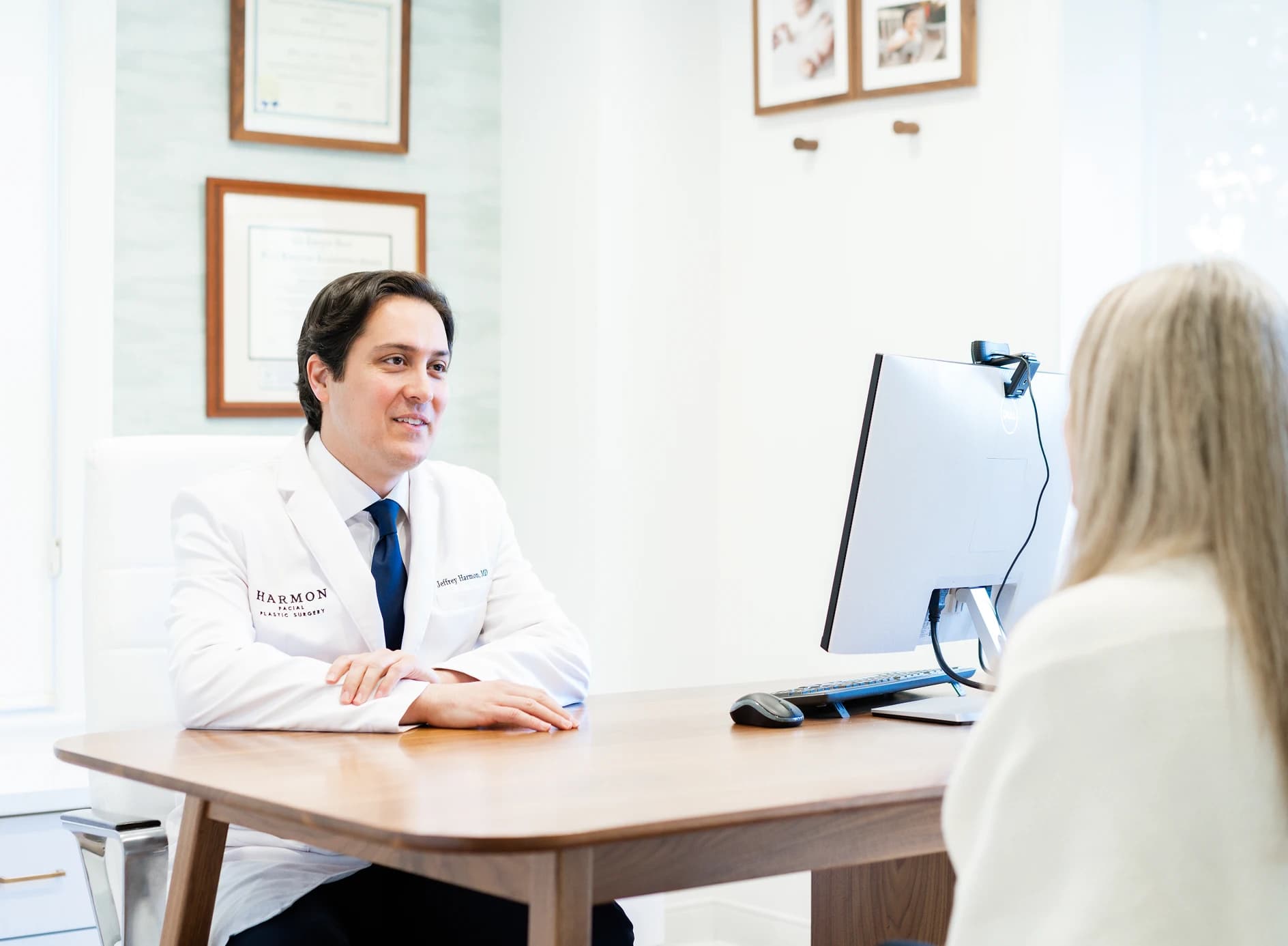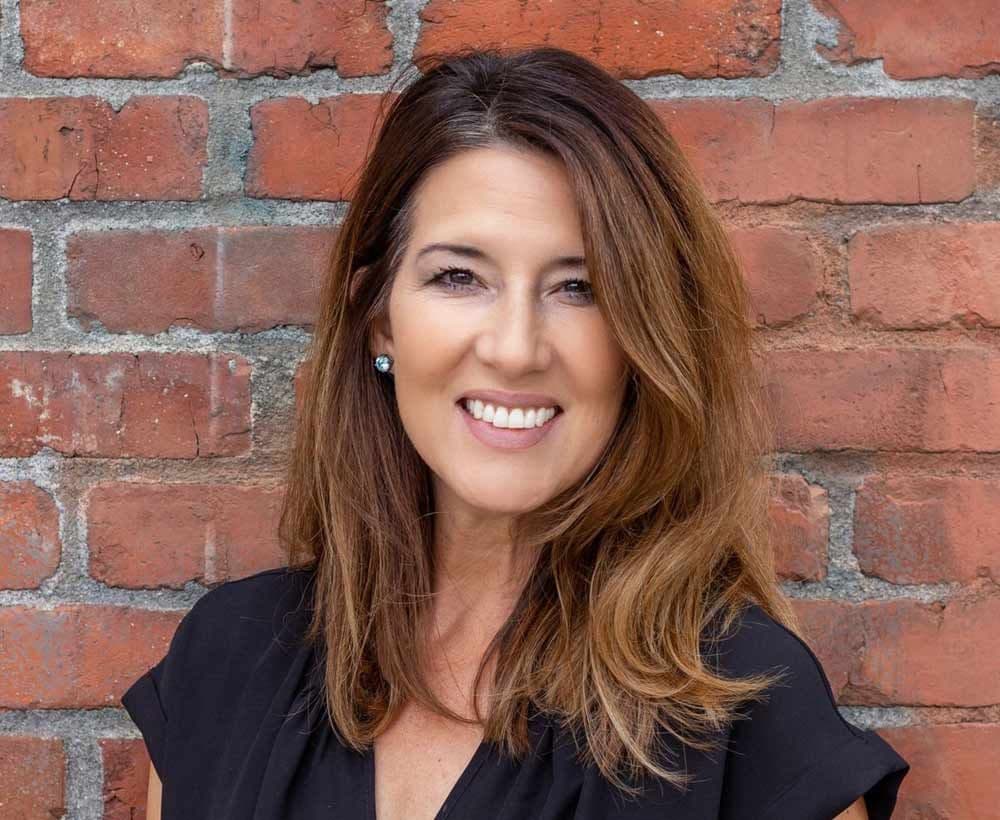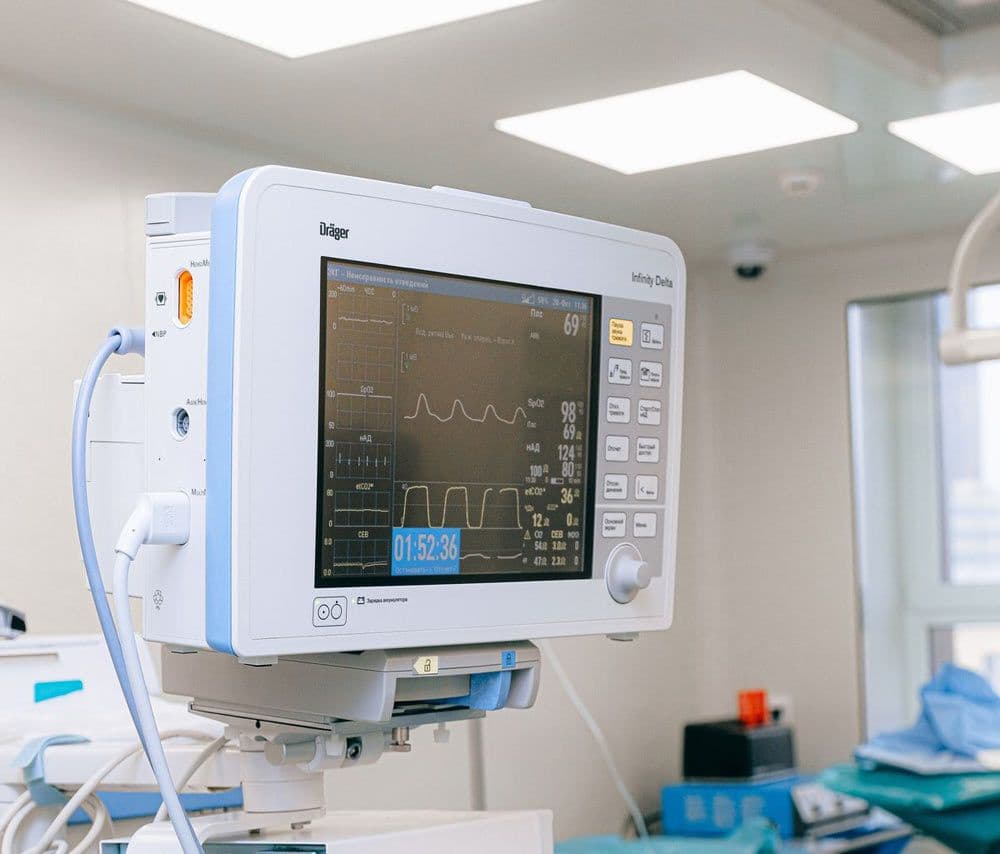Buccal Fat Removal
(Cheek Fat)- Can be performed under local anesthesia only
- Incisions are small and hidden inside the mouth on the inner lining of the cheeks
- Can reduce fullness in a specific area of the cheeks, in contrast with fillers and facial fat grafting
Contact Us
What is Buccal Fat Removal?
Buccal fat removal is a surgical procedure in which small incisions are made in the buccal mucosa, the inner lining of the cheeks inside the mouth, for the purpose of removing a portion of the buccal fat. Buccal fat is located deep to most of the fat pads of the cheeks and fills a complex three-dimensional space that can be accessed through incisions in the buccal mucosa. A portion of the buccal fat is carefully removed from this incision. The incision is then closed with dissolvable suture.
What Conditions Does the Procedure Address?
Buccal fat removal surgery helps address fullness in the region of the buccal space on the cheeks that can lead to a cherubic, baby-faced appearance. Some patients desire less fullness and a more concave contour in this location.
Why Choose Dr. Harmon
The desire for youthfulness is understandable. There is no area more important than the face. After all, the face cannot be hidden. It is how we present ourselves to the world. Dr. Harmon works with a refined eye and trained hands to develop a personalized treatment plan with you, utilizing advanced techniques in surgical and non-surgical care of the face, nose, eyes, neck and hair.
Fellowship trained facial plastic surgeons have a unique specialized skill set in performing surgical and non-surgical procedures on the face, nose, eyes, neck and hair. The pathway to becoming a facial plastic surgeon begins with five years of rigorous training in head and neck surgery. This training is focused on all aspects of surgery for the head and neck, in addition to aesthetic and reconstructive procedures.
A small pool of top performing graduates from head and neck surgery programs are then selected to complete sub-specialty training as a fellow in facial plastic and reconstructive surgery through the American Academy of Facial Plastic and Reconstructive Surgery (AAFPRS).
Dr. Harmon completed his fellowship in facial plastic surgery through the AAFPRS with the world-renowned facial plastic surgeon Dr. Andrew Jacono on Park Avenue in New York City. Dr. Jacono is world renowned for developing the extended deep plane facelift technique. Dr. Harmon is one of the few surgeons in the world, and the only surgeon in the Cincinnati area, fellowship trained in this technique by Dr. Jacono.
Quad A Accredited Surgery Suite
Harmon Facial Plastic Surgery is proud to have a Quad A accredited operating room and facility in our office. Our single-physician, single-specialty facility meets or exceeds the strict guidelines and high standards set forth by Quad A, demonstrating our strong commitment to patient safety and excellence in surgical care. We utilize the services of board-certified anesthesiology physicians only as well as our own personal clinical support staff to ensure the most comfortable, safest experience for our clients.
Overview of the Procedure
The team at Harmon Facial Plastic Surgery works tirelessly to prepare patients well for their procedure. The time spent with patients and resources provided facilitates a smooth transition from the procedure through recovery. The following overview is a broad summary of the information provided to patients:
Procedure Consultation
Expect a detailed, informative discussion with Dr. Harmon about your concerns and aesthetic goals. He will develop a personalized treatment plan to address these concerns and goals.
Pre-Treatment Preparation
Patients receive a packet with detailed pre-operative instructions prior to surgery. This packet includes information on what supplements and medications to hold prior to surgery, activity restrictions, and what supplies are necessary for post-operative recovery. Prescriptions are sent prior to surgery with instructions on their use. Finally, if medical clearance is required, a form detailing the necessary clearance and testing is provided to present to their primary care provider.
Day of Treatment
Patients are instructed to arrive at the office in comfortable clothes. The surgical plan is discussed with the patient in detail. Paperwork is completed. Photos are usually taken pre-operatively. Finally, the patient meets the surgical team, which may include nurses, anesthesiologists, and/or scrub technologists, depending on the procedure(s) and type of anesthesia used.
Follow-Up Appointment
Follow up is usually between seven (7) and fourteen (14) days after surgery. All sutures dissolve on their own.
Social Readiness
Some swelling is expected after surgery. Bruises can occur but this is uncommon. Swelling usually improves significantly by ten (10) to fourteen (14) days after surgery. As a result, most patients feel ready to socialize by ten (10) to fourteen (14) days after surgery. There are no external incisions that would require makeup to cover.
Ideal Candidates for Buccal Fat Removal
Ideal candidates for buccal fat removal include those patients who demonstrate:
- Large buccal fat pads in the cheeks
- A full, cherubic, and/or baby-faced appearance to their cheeks
Most candidates for buccal fat removal surgery range in age from their twenties (20s) to their seventies (70s). A consultation is essential to determine candidacy for the procedure, because there may be factors that preclude this procedure for certain individuals. A consultation will help establish reasonable expectations about what buccal fat removal surgery can and cannot accomplish as well as any anatomic and/or physiological factors that may influence the results. Results can vary, as with all facial plastic surgery procedures.
What to Expect from Recovery
Recovery from buccal fat removal surgery is specific to the individual. The duration of recovery will vary from person to person.
The initial recovery time for buccal fat removal is approximately seven (7) to fourteen (14) days for most individuals. Some swelling is expected after surgery. Bruises can occur but this is uncommon. Swelling usually improves significantly by ten (10) to fourteen (14) days after surgery. There are no external incisions. The sutures used to close the incisions inside the mouth dissolve on their own.
Sutures dissolve
Initial recovery
Post-operative swelling and bruising resolve
Benefits of Buccal Fat Removal Surgery
The potential benefits of buccal fat removal surgery include:
- More contoured cheeks
- A less cherubic, baby-faced appearance to the cheeks
Risks of Buccal Fat Removal Surgery
The potential risks of buccal fat removal surgery include, but are not limited to:
- Bruising
- Swelling
- Infection
- Bleeding
- Salivary duct leak
- Nerve damage
Combine Buccal Fat Removal Surgery with Other Facial Enhancements
Buccal fat removal surgery complements other surgical and non-surgical procedures well. Procedures that complement buccal fat removal include, but are not limited to:
Deep Plane Facelift
Combining buccal fat removal with a deep plane facelift may further refine the midface and jawline simultaneously. While the facelift lifts deeper tissues, buccal fat removal helps sculpt the cheeks for a more defined and elegant contour.
Neck Lift
A neck lift can add more definition to the jawline and smooth loose skin, while buccal fat removal reduces cheek fullness. Together, they may create a seamless definition from the cheeks through the neck for a naturally sculpted profile.
Brow lift
A brow lift can elevate and brighten the upper face, while buccal fat removal can enhance definition in the lower cheeks. This pairing may lead to a more harmonious appearance of the entire face, highlighting cheekbones and refreshing overall proportions.
Blepharoplasty
While blepharoplasty can rejuvenate the eyes, buccal fat removal helps slim the cheeks for a sculpted lower face. Together, they may provide a harmonious facial renewal that looks refreshed, refined, and naturally youthful from top to bottom.
Rhinoplasty
When combined with rhinoplasty, buccal fat removal can enhance facial balance by defining the midface. Slimmer cheeks help highlight your nasal refinement, creating more proportional and attractive facial contours.
Fillers
After buccal fat removal, strategic fillers can restore volume where needed, especially in the temples or under-eyes. This combination may enhance cheek definition while preserving soft, youthful balance.
Botox©
Botox© can smooth expression lines and refine muscle activity in areas like the brow and jaw. When paired with buccal fat removal, they may support an overall slimmer, more sculpted appearance with subtly refreshed features.

Book Your Consultation
Take the first step toward your aesthetic goals with a personalized consultation. Dr. Harmon will listen to your concerns, answer your questions, and guide you through your options. Schedule your consultation today and discover how expert care can make a difference.
Read More About Buccal Fat Removal

Is it My Buccal Fat or Jowl Fat That Needs Treatment?
There is a great deal of confusion among patients between buccal fat and jowl fat and their appropriate treatment, likely due to the complex shape of...

Can a Patient Undergo More than One Procedure in a Single Surgical Session?
Many patients can undergo more than one facial plastic surgery procedure in one surgical session. However, whether a patient can undergo more than...

What are the Different Types of Anesthesia Administered During Surgery?
The purpose of anesthesia is to reduce the discomfort associated with surgery and to keep the patient safe while allowing the surgeon to complete the...
FAQ
What type of anesthesia is required?
Buccal fat removal can usually be performed under local anesthesia or IV sedation. Some individuals may require general anesthesia.
Can removal of cheek (buccal) fat treat jowling?
No, cheek (buccal) fat is located in a slightly different location than the drooping fat that causes jowling. The difference between these two fat pads is subtle and requires the expertise of a specialist in facial plastic surgery to recognize. Jowling is best treated with the extended deep plane facelift.
Is buccal fat removal a painful procedure?
Facial plastic surgery procedures are generally well-tolerated by patients and typically involve little pain, especially when compared with surgery on other areas of the body. Patients are usually prescribed just a small amount of pain medication for after surgery. In fact, we have found most use only over-the-counter pain medication including acetaminophen and/or ibuprofen after surgery instead. And those who do use the prescribed pain medication usually only use it the first night after surgery. With that in mind, it is important to note that every patient perceives and processes pain differently. Some patients have a high pain tolerance. Others may be more predisposed to be more sensitive to pain. We at Harmon Facial Plastic Surgery are focused on balancing minimizing post-operative discomfort and maximizing safety.
Can cheek (buccal) fat be removed with the extended deep plane facelift?
Yes. In fact, in distinction from many other facelift techniques, the buccal fat can be removed during the extended deep plane facelift without making incisions on the inside of the cheeks.
Could I regain the fat in the future if I gain weight?
The cheek (buccal) fat is unlikely to return to its pre-removal volume with weight gain. However, cheek (buccal) fat is removed when no significant weight change is anticipated.
Is buccal fat removal the right procedure for me?
Research is mixed as to whether the buccal fat increases or decreases in size or remains the same size with aging. Therefore, only a small percentage of the actual fat present in the buccal space is removed with surgery. Also, this procedure is only performed on individuals with large buccal fat pads who are at a stable weight without anticipated significant weight loss. These considerations reduce the risk of more dramatic changes developing with aging. The decision to undergo buccal fat removal depends on an individual's aesthetic goals, the acceptance of results meant to reduce any potential risks with the procedure, and the understanding that aging can be unpredictable, especially over longer periods of time.
Written by Dr. Harmon
Discover the expertise and compassionate care of Dr. Jeff Harmon, a fellowship-trained facial plastic surgeon deeply rooted in the Cincinnati community. A former collegiate athlete and Cornell University graduate, Dr. Harmon brings discipline, precision, and a global perspective to his surgical practice—refined through elite fellowship training in New York City.
Located in Hyde Park, Harmon Facial Plastic Surgery proudly serves patients throughout the Cincinnati area offering personalized facial aesthetics with world-class skill and a hometown heart.